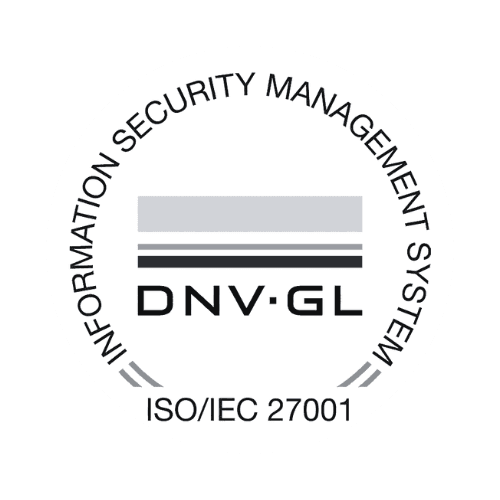Nichts verpassen & anmelden:
Written by AI
Achieving Peak Performance with Gamification: How Playful Elements Enhance Employee Performance
Employee motivation and productivity are critical factors for a company's success. In recent years, gamification has proven to be an effective method for enhancing employee performance. By incorporating playful elements into work environments, companies can better motivate and engage their employees. In this article, we will take a closer look at the psychological effects of gamification on employee motivation, examine the scientific background, highlight success factors for introducing gamification in employee development, discuss the measurability of gamification initiatives, illuminate the role of leaders in fostering a gamified corporate culture, look into the future, and consider various case studies of successful companies.
The Psychological Effects of Gamification on Employee Motivation
Gamification utilizes human psychology to increase employee motivation and concentration. By employing playful elements such as point systems, leaderboards, and rewards, both intrinsic and extrinsic motivational factors are addressed. Employees are challenged to achieve goals and rewarded for doing so, leading to increased engagement and improved performance.
The social aspects of gamification also play an important role. The competition among employees creates a sense of community and collaboration. Employees can support each other, offer advice, and celebrate achievements together. This fosters teamwork and strengthens motivation.
Another interesting psychological effect of gamification is the release of dopamine in the brains of employees. When they receive rewards or achieve goals, dopamine is released, creating a feeling of happiness and providing positive reinforcement for their behavior. This can lead to an addiction to achieving goals and help maintain motivation over the long term.
In addition to the effects mentioned, gamification can also improve employees' learning curves. By breaking down complex tasks into small, incremental challenges, learning becomes more playful and effective. Employees can continuously enhance their knowledge and skills, which not only boosts their motivation but also improves the quality of their work.
The Science Behind Gamification: What Makes Playful Elements So Effective?
The effectiveness of gamification is based on various psychological principles. A key factor is the release of dopamine in the brain. When employees receive rewards, whether in the form of points, badges, or virtual accolades, dopamine is released. Dopamine is a neurotransmitter associated with reward and pleasure. This positive reinforcement motivates employees to do their best and improve their performances.
Another reason for the effectiveness of gamification lies in the challenges and feedback it provides. By using levels, objectives, and progress indicators, clear goals are set and progress made visible. Employees receive continuous feedback on their performance, helping them improve and stay motivated.
An interesting aspect of gamification is the application of social dynamics. When teams or individual employees interact to achieve common goals or compete against each other, a sense of collaboration and community emerges. This social component can further enhance participants' motivation and encourage them to support and cheer each other on.
Success Factors for Introducing Gamification in Employee Development
To successfully implement gamification in employee development, certain success factors need to be considered. First, it is essential for the company to have a clear vision and strategy for implementation. Clear goals should be defined, and the roles and responsibilities of all participants should be clearly established.
A close collaboration between HR departments, leaders, employees, and gamification experts is crucial. The needs and expectations of employees should be taken into account to develop a tailored gamification strategy. Training and guidance for employees are also important to ensure they correctly understand and can utilize the playful elements.
Feedback mechanisms and the ability to adjust gamification initiatives are equally vital success factors. Continuous monitoring and data evaluation can help measure the effectiveness of gamification measures and suggest improvements.
Another critical success factor for introducing gamification in employee development is transparency and openness throughout the process. Employees should understand why certain gamified elements are implemented and how they contribute to achieving corporate goals. This fosters acceptance and motivation among employees to actively participate in gamified activities.
Furthermore, it is crucial that the gamification strategy is continuously developed. New trends and insights in the field of gamification should be regularly reviewed and, if necessary, integrated into the existing strategy to maintain the attractiveness and effectiveness of the measures.
Measurable Results: How to Quantify the Success of Gamification Initiatives
The effectiveness of gamification can be measured and quantified through various KPIs (Key Performance Indicators). Commonly used KPIs include increased employee motivation, improved performance and productivity, reduced absenteeism and turnover, as well as increased employee engagement.
Additionally, data from the playful elements themselves can provide insights into the success of gamification initiatives. The number of levels achieved, points earned, or participation rates in specific activities can serve as indicators of effectiveness.
Measuring the success of gamification initiatives requires careful analysis of collected data. It is essential to regularly monitor and evaluate the KPIs to ensure that the desired goals are achieved. Furthermore, qualitative assessments through employee surveys about their perceptions and satisfaction with the gamified processes can provide valuable insights.
The Role of Leaders in Promoting a Gamified Corporate Culture
Leaders play a crucial role in creating a gamified corporate culture. They should clearly communicate the vision and strategy for gamification and set an example by actively participating in the playful activities themselves.
Leaders should encourage their employees to engage in the various gamification initiatives and make them feel that their participation is valued. Regular feedback and recognition for achieved progress and performance are also crucial to keep motivation high.
Moreover, leaders can foster team spirit by positively stimulating competition among employees. Team-building events or challenges can help strengthen collaboration and enhance team spirit.
It is also important to emphasize that leaders should maintain an open line of communication to create an environment where employees can provide constructive feedback and contribute ideas to improve the gamified corporate culture. By addressing the suggestions and concerns of their team members, leaders can further strengthen engagement and participation in the gamification process.
Additionally, leaders can provide training and resources to ensure that their employees have the necessary skills and knowledge to successfully participate in gamified activities. This can shorten the learning curve and ensure that all employees have equal opportunities to benefit from the gamified corporate culture.
Future Prospects: How Gamification Trends Will Impact the Workplace
Gamification trends are expected to continue influencing the workplace in the future. With the increasing digitization and the use of technologies such as artificial intelligence and virtual reality, the potential for gamification will only grow.
It is expected that companies will increasingly implement gamified learning and training programs to promote the continuing education and development of their employees. Furthermore, gamification could also be applied in other areas such as project and task management, customer engagement, and teamwork to increase motivation and productivity.
An interesting aspect of gamification in the workplace is the ability to motivate and reward employees through playful elements. By using point systems, leaderboards, and virtual badges, employees can be encouraged to enhance their performance and continuously improve. This type of motivation can be particularly effective as it addresses the intrinsic desire for recognition and success.
Gamification in Practice: Case Studies of Successful Companies
Many companies have successfully implemented gamification initiatives. One example is [Company A], a leading insurance provider that has integrated gamification into its training program for insurance agents. Through the use of playful elements, participants were able to improve their product knowledge and increase sales performance.
Another example is [Company B], a global technology corporation that has integrated gamification into its employee development. By using point systems and challenges, employees were motivated to continuously improve their skills and participate in training programs.
These case studies show that gamification can be an effective tool for enhancing employee performance and making work environments more motivating and engaging. Companies should recognize the potential of gamification and integrate it into their employee development.
Overall, gamification offers an innovative way to boost employee motivation and performance. By incorporating playful elements, companies can better motivate, engage, and develop new skills in their employees. It is important to understand the psychological effects and scientific backgrounds of gamification and consider the success factors during implementation. With a gamified corporate culture and targeted measurements, companies can quantify the success of their gamification initiatives. The role of leaders in fostering a gamified corporate culture should not be underestimated. The future prospects for gamification are promising, and companies should leverage these trends to lead their employees to peak performance.
Another company that successfully utilized gamification is [Company C], a leading retailer. They integrated gamification into their customer loyalty program to motivate customers to shop regularly at their stores. By using rewards and competitions, they were able to increase customer retention and boost sales.
Additionally, [Company D], a well-known social media company, integrated gamification into its platform to promote user interaction. Through the use of point systems, leaderboards, and virtual badges, users were motivated to stay active and share content with others. This significantly increased the company's user base.
These examples illustrate that gamification can be successfully applied not only in the corporate world but also in retail and the social media sector. The possibilities are diverse, and companies should be creative to adapt gamification to their individual needs. By strategically utilizing playful elements, companies can better engage their customers and users and achieve their goals more effectively.








